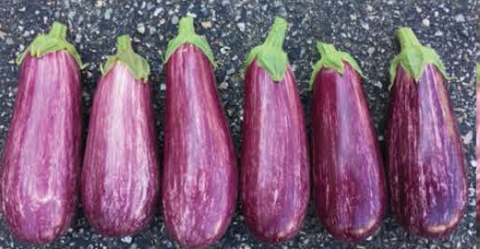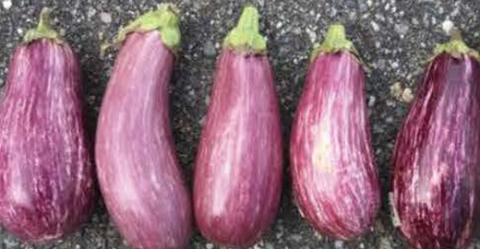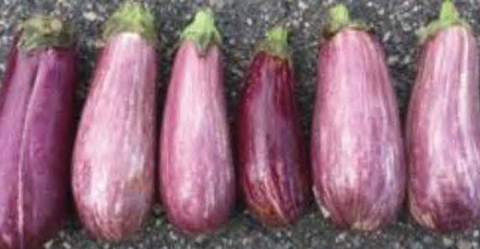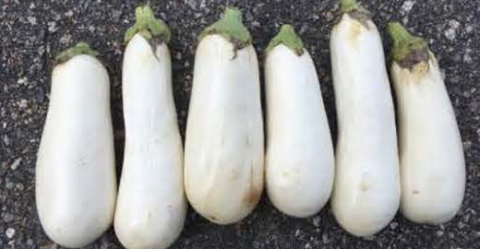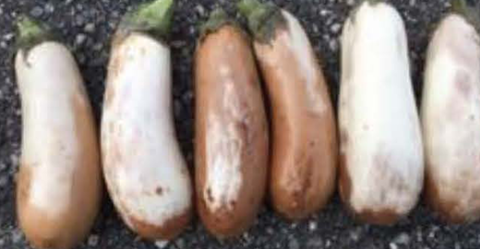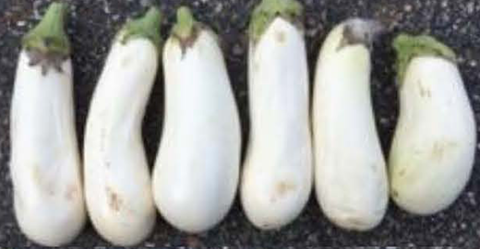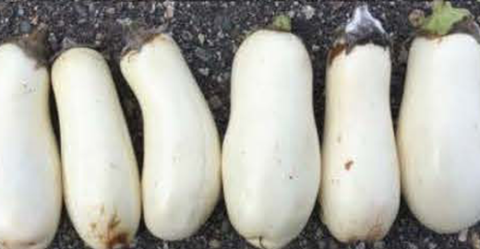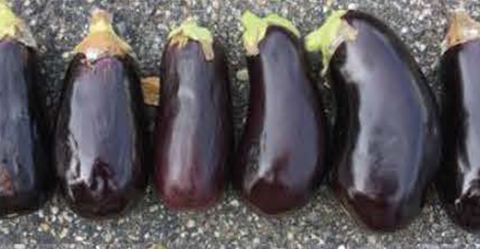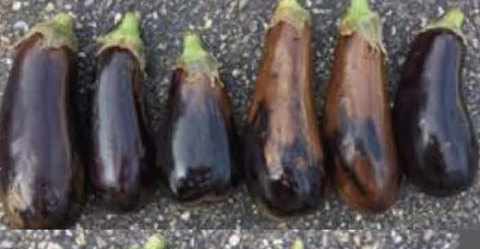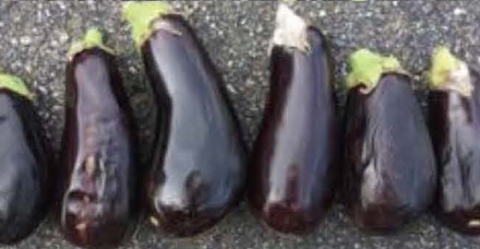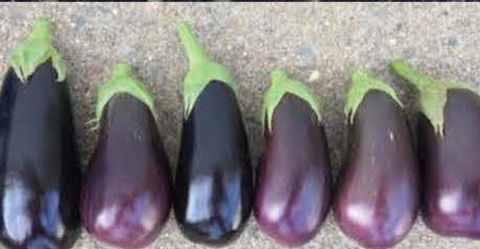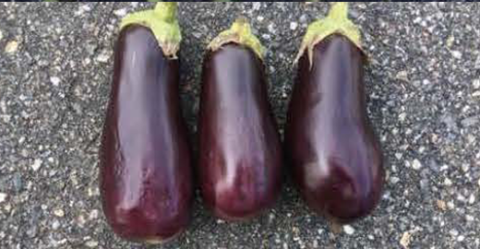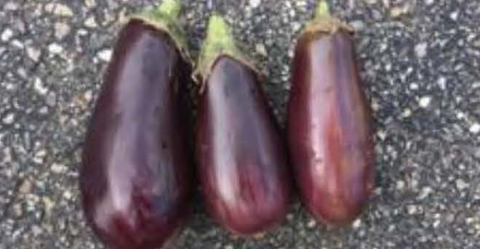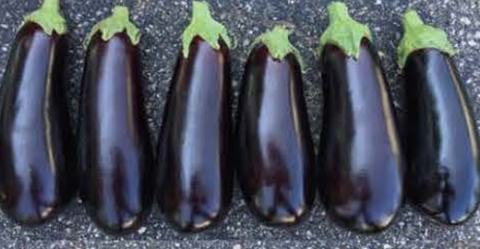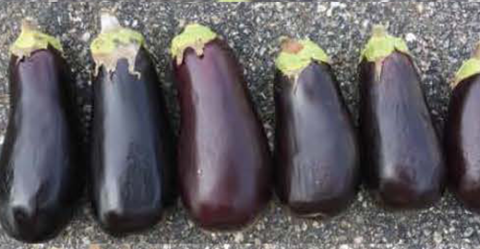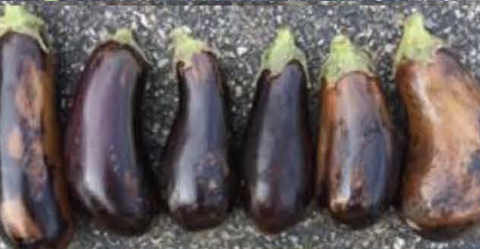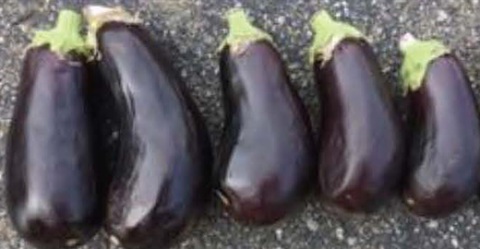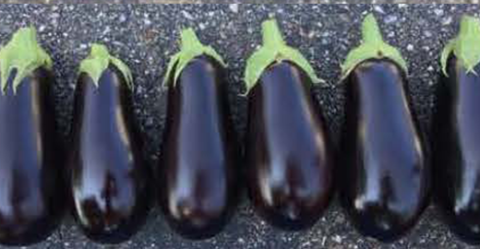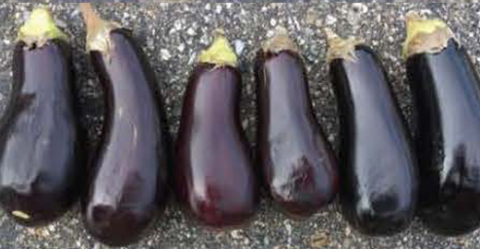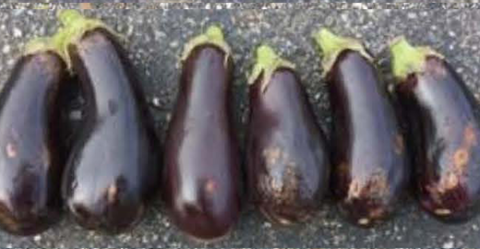Key Findings

Low-labor pruning methods, like corralling plants, produced higher yields in all 10 varieties researched. While pruning plants to four leaders increased yields in one year for the varieties, it did not in the second year.
High tunnel eggplants are attractive to aphids and spider mites. Growers should monitor for these pests and have a plan in place to manage them if they are detected.
About the Co-Author
Becky Sideman, professor, Agriculture, Nutrition, and Food Systems; follow the UNH Sideman Lab on Instagram
Contact information: Becky.Sideman@unh.edu, 603-862-3203
This research was published in the INSPIRED: A Publication of the New Hampshire Agricultural Experiment Station (Summer 2022)
Researchers: B. Sideman and L. Ford
Recently, parthenocarpic varieties of eggplant (varieties that fruit without pollination) have been developed specifically for protected cultivation. In places where eggplant is frequently grown in greenhouses, various pruning systems are used to enhance plant productivity and growth. In this study, researchers compared 10 varieties of elongated Italian eggplants to determine whether pruning to a 2- or 4-leader system would impact yields (when compared with no pruning) and the effects of postharvest storage on different varieties.
Planting and harvesting
Eggplants were seeded on April 12, 2018, and March 25, 2019, and transplanted into a high tunnel on June 1, 2018, and May 20, 2019. Soybean meal (7-1-2) and potassium sulfate (0-0-50) preplant were applied to provide 55 pounds per acre (lbs/acre) of Nitrogen and 145 lbs/acre of potash. Planting beds were spaced 4 feet on center, slightly raised (1-2 inches), and covered with embossed black plastic mulch. Plants were spaced 12 inches apart in single rows. In 2018, Azera (pyrethrins, neem) was applied in June to control aphids. Shuttle O (acequinocyl) was applied once in August to control spider mites. In 2019, Shuttle O was applied once in August.
Eggplants were harvested weekly between July 6 and October 18, 2018, and between July 3 and October 18, 2019, after which the plants were killed by frost. Fruit were counted, weighed and sorted into marketable and unmarketable (scarred or misshapen) groups. On two dates each year, harvested fruit were set aside for postharvest trials.
Marketability of fruit
Some varieties of eggplant produced over 6 pounds of fruit per plant during the season. In general, eggplant produced marketable fruit very early; the first fruit were harvested just five weeks after transplanting. All varieties showed good production continuity, aside from a dip in early September that may have been due in part to a spider mite infestation. Plants produced marketable fruit until experiments were ended in mid-October.
There were only slight differences in total marketable yield between varieties in 2018 and no significant differences in 2019 (Table 1). In 2018, the White Star variety had significantly lower yields compared with Nadia and Angela. White Star also had a significantly lower percentage of fruit that were marketable (69 percent), largely due to scarred and/or misshapen fruit. Of the two white varieties, Aretussa was very uniform whereas White Star (2018 only) was much more variable, with several plants that produced light-green, off-type fruit.


High tunnel-grown Italian eggplants in a range of colors.
Of the purple varieties, Traviata and Jaylo had distinctly pear-shaped fruit, whereas Nadia and Michal fruit were more elongated. Tucci (added in 2019) fruit were very slender and more Asian than Italian type. Jaylo was a lighter purple color, with many of the fruit showing pale purple stripes near the base of the fruit. Angela, Annina and Nubia all produced uniform elongated striped fruit.
Note: Angela, Aretussa, Jaylo, Nadia, Nubia: Johnny's Selected Seeds; Annina, Michal, Traviata: High Mowing Seeds; Tucci: New England Seeds; Annina, Traviata, White Star: Harris Seeds. Values followed by the same letter are not significantly different from one another.
Support and pruning systems
In 2018, researchers compared three pruning systems (2-leader, 4-leader and corralled) for three varieties (Michal, Nadia and Traviata), and in 2019, they compared only two systems (4-leader and corralled). The variety trial was corralled in both years. In a 2018 preliminary pruning experiment (two replicates only), the 4-leader system produced higher yields than the unpruned system. In a larger 2019 experiment, researchers did not observe differences in yield between the pruned and unpruned treatments (Table 2).
Support and pruning systems
In 2018, researchers compared three pruning systems (2-leader, 4-leader and corralled) for three varieties (Michal, Nadia and Traviata), and in 2019, they compared only two systems (4-leader and corralled). The variety trial was corralled in both years. In a 2018 preliminary pruning experiment (two replicates only), the 4-leader system produced higher yields than the unpruned system. In a larger 2019 experiment, researchers did not observe differences in yield between the pruned and unpruned treatments (Table 2).

Purning systems (from left to right): two-leader system, four-leader system, and unprunced corralled system.
Postharvest storage
Eggplant fruit are particularly sensitive to desiccation and weight loss at temperatures above 10-12°C (50-54°F) and to chilling injury at temperatures below this range. In four experiments, researchers held eggplants at different temperatures for two weeks to determine varieties' susceptibility to these postharvest problems.
At temperatures that were too warm (e.g., the packhouse), eggplant fruit lost much more weight and softened much more than when stored at cooler temperatures. At cold (refrigerator) temperatures, fruit lost the least weight and remained firm, but suffered chilling injury and showed surface pitting and browning. Several varieties exhibited mold on their calyxes after two weeks of storage; this was more evident at the higher temperatures than in the refrigerator (Table 3 and Table 4). In 2018, varieties differed in susceptibility to these problems. Angela lost significantly less weight and remained significantly firmer than some varieties (Aretussa and Michal, for example). Along with Jaylo and Traviata, Angela also showed the least browning after two weeks of storage; Aretussa, Michal and White Star showed the most browning.

